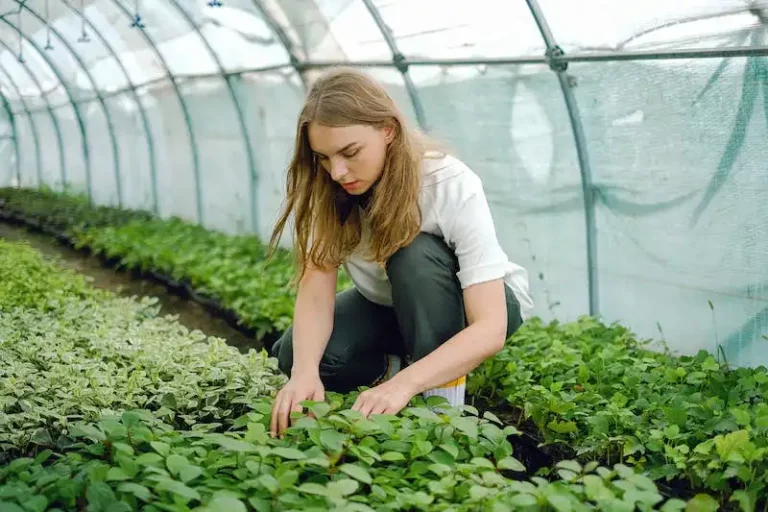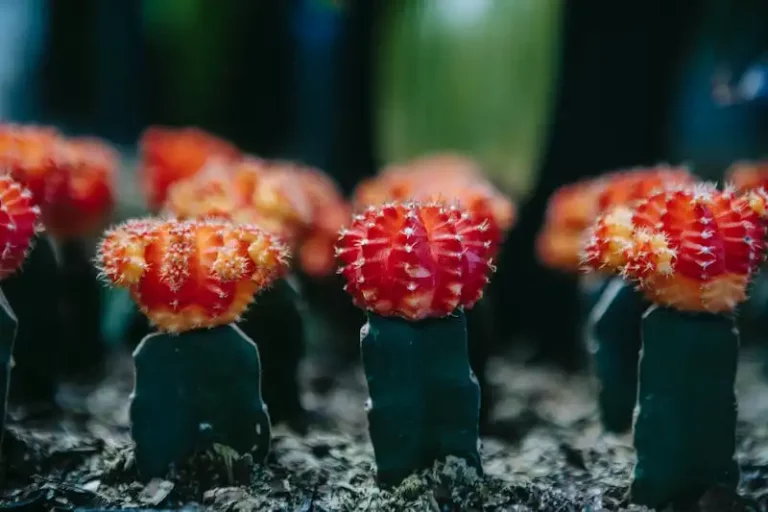When it comes to growing yuccas, there are several common problems that may arise. Pests, humidity, and moving can all impact the health of your yucca plant. In the summer months, yuccas may be susceptible to pests such as spores and fungi, which can cause yellow spots and browning leaves. If you notice these issues, it’s important to act quickly in order to counteract the damage.
Yuccas are relatively easy to grow, but they do have specific care requirements. For example, yuccas prefer full light and well-drained soil. Overwatering can lead to root rot, while underwatering can cause wilted or drooping leaves. Additionally, yuccas are native to dry and sandy environments, so they don’t tolerate excessive humidity very well. In the winter months, yuccas should be watered less frequently and the soil should be allowed to slightly dry out.
If your yucca is not looking its best, it may be time to consider repotting. Yuccas should be repotted every 2 to 3 years in a gritty, well-draining medium. This will help to prevent waterlogged roots and promote healthy growth. It’s also important to provide plenty of fertilizer during the growing season, but be careful not to overfertilize as this can lead to sick or burned leaves.
While yuccas are known for their hardiness, they can still be susceptible to certain diseases and conditions. Common issues include brown spots on the leaves, which can be caused by cold or low light conditions. If your yucca has turned yellow or has dried, outer leaves, it may be suffering from overwatering or root rot. In these cases, it’s important to adjust your watering routine and make sure the soil is well-draining.
If you’re new to yucca cultivation or just need some advice, don’t be afraid to ask for help. There are plenty of resources available to learn more about yucca care and gardening tips. Whether you’re dealing with pests or trying to heal a sick yucca, there are solutions out there to help you. Just remember to give your yucca plants the care they need and they will reward you with their beautiful, sword-like foliage.
How to Revive a Dying Yucca Plant
If you have a yucca plant that is looking unhealthy or dying, there are steps you can take to try and revive it. Before attempting any revival methods, it is important to identify the potential reasons behind the plant’s decline.
One common reason for a dying yucca plant is environmental issues. Yuccas are native to arid areas such as Mexico and the southwestern United States, so they thrive in well-draining soil with minimal water levels. If your yucca is planted in a pot, check the potting soil to ensure it is not waterlogged. To promote optimal drainage, consider using a cactus or succulent potting mix.
Another environmental factor that can affect yucca plants is lighting. Yuccas typically need bright sunlight to thrive, so if your plant is not getting enough light, it may start turning yellow or drooping. Make sure to place your yucca in an area with sufficient sunlight.
Excessive watering or over-fertilizing can also lead to a dying yucca plant. Yuccas are drought-tolerant and don’t require frequent watering. Allow the soil to dry out completely between waterings, and make sure to remove any standing water from the pot or saucer. Additionally, avoid using excessive fertilizer, as this can cause toxicity levels in the plant.
If your yucca plant has already started to decline, there are a few steps you can take to help revive it. Firstly, check for any signs of pests or diseases. Common issues include fungal infections or mealybugs. Treat these problems with appropriate pesticides or natural remedies, such as neem oil or a vinegar-water mixture.
If the outer leaves of your yucca plant are drying or turning brown, you can try cutting them off to promote new growth. Make sure to use clean and sharp pruning shears, and cut the leaves at a 45-degree angle. This will help prevent the spread of any potential diseases or spores.
In some cases, transplanting your yucca plant to a slightly bigger pot with fresh soil may also help revive it. This can provide the plant with additional nutrients and space to grow.
In conclusion, reviving a dying yucca plant requires identifying the root causes of the problem and taking appropriate steps to address them. Whether it’s providing the right environmental conditions, adjusting watering and fertilizing practices, or treating pests and diseases, a little care and attention can often bring a yucca plant back to its former health.
For more in-depth guides on common yucca growing problems, be sure to check out our other articles. And don’t forget to sign up for our newsletter to receive helpful tips and advice right to your inbox!
Yucca Plant Leaves Turning Yellow
One common problem that yucca plants may experience is yellowing leaves. This can occur for several reasons, including both natural causes and plant care issues. It’s important to identify the cause of yellowing leaves and address it promptly to keep your yucca plant healthy.
One reason why yucca plant leaves may turn yellow is due to overwatering. Yuccas prefer well-draining soil, so if the soil becomes excessively waterlogged or the plant is consistently watered too often, the roots can become waterlogged and eventually rot. Yellowing leaves can be a sign of overwatering, as the roots are not able to take in enough oxygen. To counteract this, be careful not to water the plant too frequently and allow the soil to dry out between waterings.
Another reason for yellowing leaves may be underwatering. Yuccas need consistent moisture, and if they are not watered enough, their leaves can start to turn yellow and eventually brown. It’s important to assess the soil moisture levels regularly and ensure that the plant is receiving enough water. However, be cautious not to overwater, as this can cause other problems such as root rot.
In some cases, yellowing leaves may be due to fungal diseases. Yuccas are susceptible to fungal diseases, such as leaf spots and blight, especially in humid climates or if there is a lack of air circulation. Fungal diseases can cause yellow or brown spots on the leaves, and they may spread if not identified and treated promptly. If you suspect a fungal disease, it’s important to remove any affected leaves and avoid overhead watering to prevent the spread of the disease. Additionally, using a fungicide specifically formulated for yuccas can help control the fungal growth.
Pests, such as aphids or spider mites, can also cause yellowing leaves. These pests can suck the sap from the leaves, causing them to turn yellow and eventually die off. Regularly inspect your yucca plant for pests and take appropriate measures to control them, such as using insecticidal soap or neem oil.
Finally, yellowing leaves can be a natural part of the yucca plant’s growth cycle. Older leaves may turn yellow and die off, especially during the winter months or when the plant is under stress. This is a normal process, and as long as new growth continues to appear, there is no need to worry. Simply remove any yellow or dying leaves to keep the plant looking tidy.
In conclusion, yellowing leaves can be caused by several factors, including overwatering, underwatering, fungal diseases, pests, or natural aging. By being attentive to your yucca plant’s needs and providing proper care, you can help prevent and address yellowing leaves. Remember to assess the soil moisture regularly, control humidity levels when necessary, and promptly address any signs of disease or pests. Maintaining the right balance of sunlight exposure, watering, and temperature can help keep your yucca plant’s leaves looking vibrant and healthy.
How to Revive a Yucca Plant with Yellow Drooping Leaves
If you notice that your yucca plant has yellow drooping leaves, it is a clear sign that it is not in good health. However, there are steps you can take to heal and revive your plant.
The first thing you should check is the soil. Yuccas prefer well-draining soil, so if the soil is too wet or compacted, it can lead to yellowing and drooping leaves. Make sure the roots have enough room to grow by repotting the yucca in a larger container if needed.
Overwatering is a common mistake in yucca plant care. Yuccas are native to arid climates and are adapted to thrive in dry conditions. Too much water can lead to root rot and other fungal diseases. To prevent overwatering, allow the plant to completely dry out between waterings and avoid standing water in the container.
Another important factor for yucca plant health is lighting. Yuccas need bright, indirect sunlight to thrive. Insufficient sunlight can cause the leaves to turn yellow and droop. If your yucca is not near a sunny window, consider using artificial lighting to supplement natural sunlight.
It’s also a good idea to inspect the plant for pests or diseases. Yuccas can tolerate a wide range of environmental conditions, but they are susceptible to certain pests and diseases. Look for signs of insects, such as spider mites or aphids, and treat the plant accordingly.
Furthermore, yuccas are typically low-maintenance plants that require minimal care. However, if you live in a colder climate, it’s crucial to bring your yucca indoors before the first frost. Yuccas do not tolerate freezing temperatures and prolonged exposure to cold weather can cause wilting and damage to the plant.
If you have tried all of these measures and your yucca plant continues to have yellow drooping leaves, it may be a sign of a more serious issue. Consider consulting a professional plant specialist, such as a horticulturist, to determine the exact cause and find a suitable solution.
In conclusion, reviving a yucca plant with yellow drooping leaves is a process that requires patience and careful attention. By ensuring proper soil drainage, avoiding overwatering, providing sufficient sunlight, and addressing any pests or diseases, you can give your yucca plant the best chance to recover its healthy foliage.

